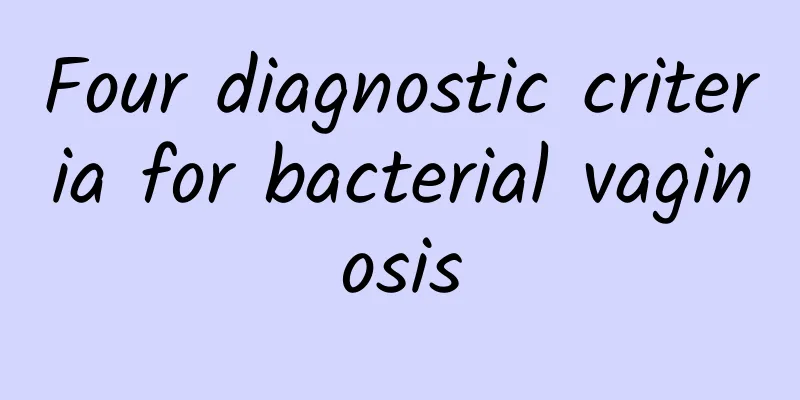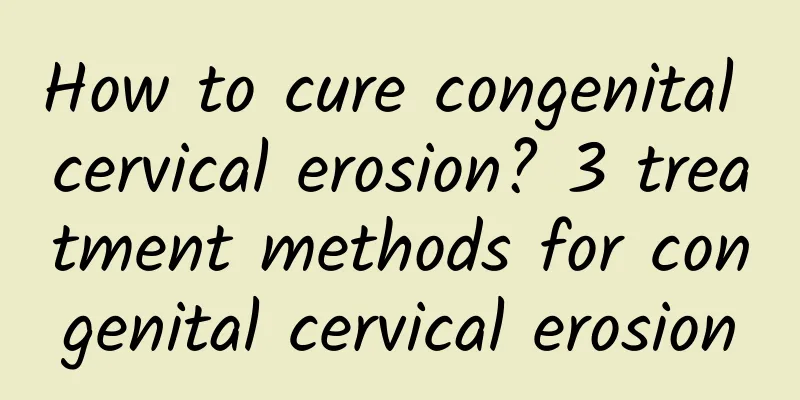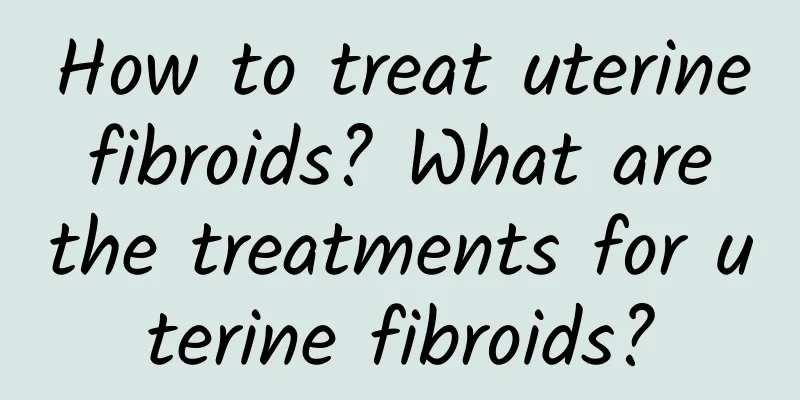Is minimally invasive treatment good for cervical erosion? These methods are also very effective in treating cervical erosion.

|
Gynecological diseases have always been a pain for women, and most women don't know that they have actually been infected with gynecological diseases. Because the symptoms of gynecological diseases are not so obvious, some may have abnormal vaginal discharge or some soreness in the waist. In the past two years, there have been more and more patients with cervical erosion. Generally, most of them are found to be third-degree erosion. So is minimally invasive treatment good for cervical erosion? What are the symptoms of cervical erosion? Cervical erosion is a common manifestation of chronic cervicitis. Due to long-term chronic inflammation, the original squamous epithelium on the surface of the cervix falls off and is covered by the proliferation of columnar epithelium in the cervical canal, with a red granular appearance. Due to different degrees of inflammatory stimulation, the columnar epithelium of the cervical mucosa grows slowly, the epithelium is flat, and the surface is smooth, which is simple erosion; the columnar epithelium grows quickly, and when glandular hyperplasia is formed, it is adenoid erosion. If the glands are dilated, it can be follicular erosion, accompanied by stromal hyperplasia, forming small protrusions, and unevenly covered with columnar epithelium, forming papillary erosion. Cervical erosion is the most common local feature of chronic metritis. Due to the infiltration of inflammatory secretions, the squamous epithelium of the cervix falls off and is replaced by the columnar epithelium of the cervical canal, which manifests as cervical erosion. Clinically, cervical erosion is divided into grades I, II and III according to the size of the cervical erosion area. The main symptoms are: increased leucorrhea, itchy and painful vulva, pain in the lower abdomen and lumbosacral region, frequent urination or difficulty urinating, and infertility. What methods are better for treating cervical erosion? Is minimally invasive treatment of cervical erosion good? For the disease of cervical erosion, we must first have a correct understanding. Cervical erosion is a common cervical gynecological disease. It does not exist independently. There are many causes of the disease, and it is very complicated to treat. It has a serious impact on women's work and life. Although there are many methods for treating cervical erosion, the effects vary. How about minimally invasive treatment? Which methods are better? 1. Drug treatment - This method is generally more suitable for patients with smaller erosion area and shallower inflammatory infiltration. 2. Physical therapy - Physical therapy is a treatment method that is currently used more frequently, and it has the advantages of short treatment course and good efficacy. It is more suitable for patients with larger cervical erosion area and deeper inflammatory infiltration. Commonly used methods include electric ironing, laser therapy, and cryotherapy. Experts recommend that patients with cervical erosion who have not given birth should not receive physical therapy, because if the treatment is too deep, permanent scars will be left, and it may also lead to the closure of the secretory glands, which in turn changes the cervical mucus and cause infertility; or cause the cervical dilation to be hindered during childbirth. If the clinical symptoms are not very obvious, the patient can choose not to receive treatment and consider it after childbirth. 3. For patients with moderate to severe cervical erosion, conservative treatment can be carried out with drugs first. After a period of conservative treatment, if the patient's cervical erosion is not under control, surgical treatment should be considered. Traditional surgical methods require hospitalization and scheduling, which is very troublesome. Nowadays, cervical erosion is treated with LEEP knife minimally invasive technology. |
>>: What are the causes of cervicitis? What are the hazards of cervicitis in women?
Recommend
Experts explain the causes of vulvar leukoplakia
Vulvar leukoplakia is a very common gynecological...
Black beans help you lose weight, and they actually have 3 secret weapons! 4 must-have black bean diet recipes
Black beans are known as the "king of beans&...
What medicine is good for irregular menstruation and general weakness?
Menstrual irregularity is a more common disease a...
1 minute before bedtime to get rid of belly fat and shape your body
The three sets of movements introduced this time ...
Female friends should do a good job in preventing adnexitis
Adnexitis is a relatively serious gynecological d...
Why do women have anovulatory functional uterine bleeding?
In a normal menstrual cycle, the hypothalamus pro...
Vitamin D deficiency can lead to obesity, and there are 6 major risks you can’t avoid! Pharmacist Zhao Shunrong: Obese people need high doses of vitamin D
Vitamin D is known as the "sunshine vitamin&...
What to do if your menstrual period lasts for 20 days?
What should I do if my menstrual period lasts for...
Introduction to the treatment of early ectopic pregnancy
Patients with early ectopic pregnancy all know th...
What should I do if I have irregular menstruation due to uterine fibroids?
What should I do if I have irregular menstruation...
What are the diagnostic analyses for menopause?
Women in menopause are affected by many factors, ...
What causes ovarian cysts?
Ovarian cysts are fluid retention in a woman'...
What is it like to have two periods in one month?
Having two periods in one month may be due to abn...
What are the preventive measures for ectopic pregnancy?
Any implantation of a fertilized egg in an unexpe...
5 tips to lose weight, promote metabolism and break down fat! Korean medicine: Drink turmeric smoothie to eliminate waste from the body
Obesity is the biggest cause of chronic inflammat...









